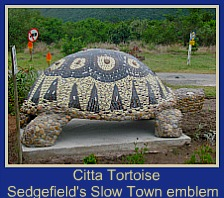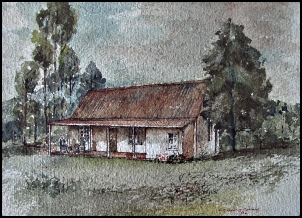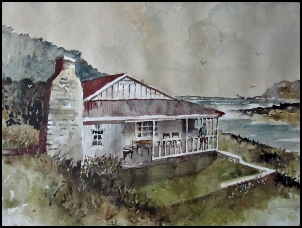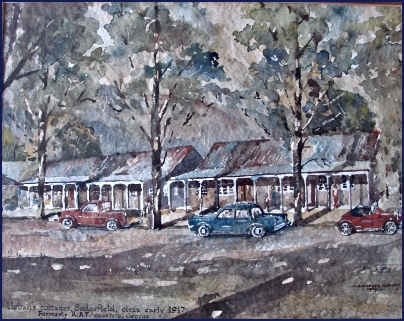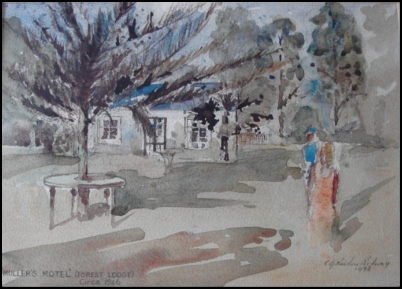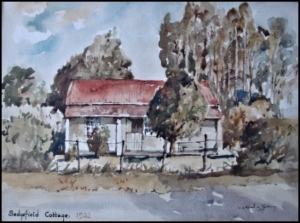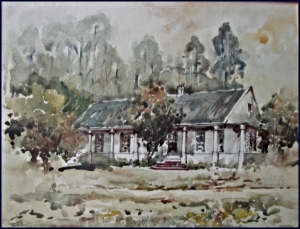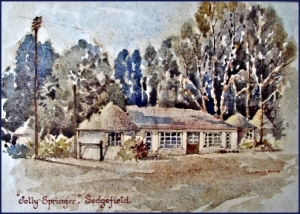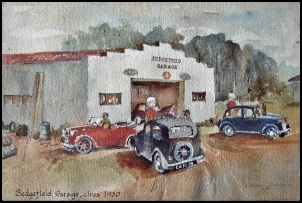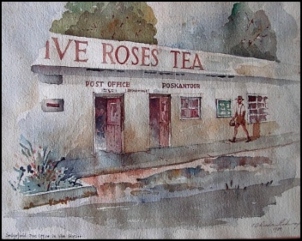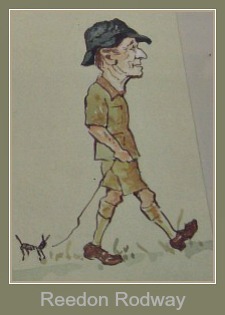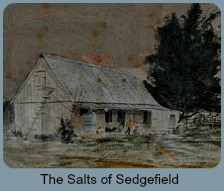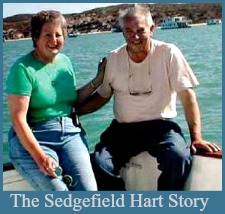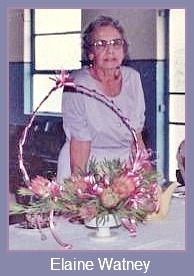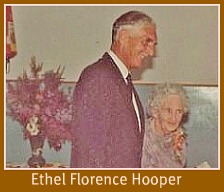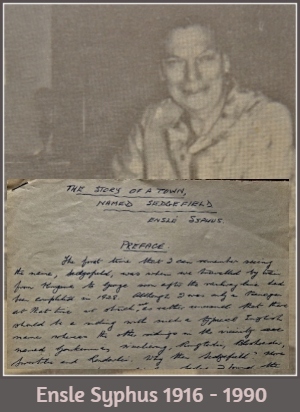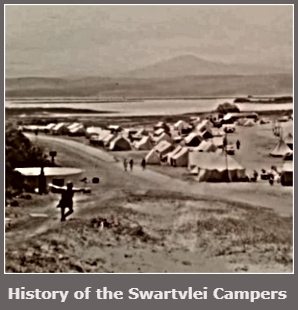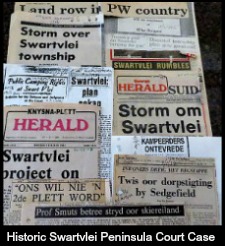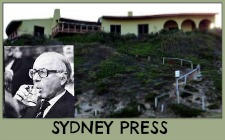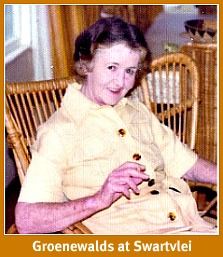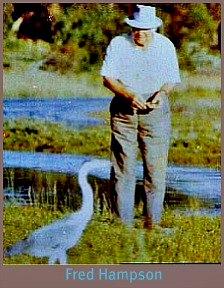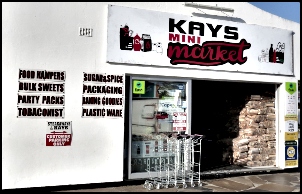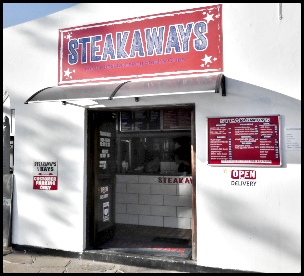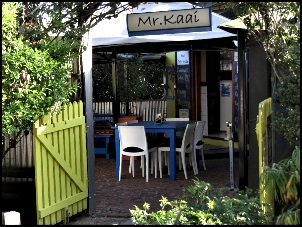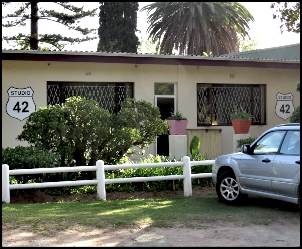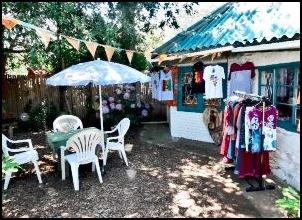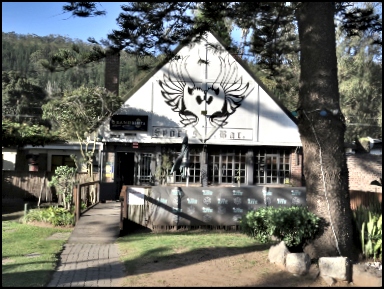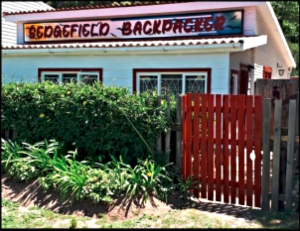Gerry Stavros
A Man of many Talents
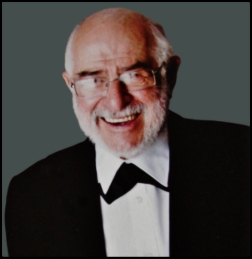 Gerry Stavros
Gerry StavrosIt is most likely that Gerry Stavros owes much of the quality and direction of his life experience to his early years in the scouting movement. The whole purpose of the voluntary, non-political, educational movement was designed to encourage boys from a young age to explore their interests and passions and grow in the area of adventure, personal development, leadership and service, to be able to work in a team yet be willing to take responsibility individually for their actions.
Gerry first joined as a cub progressing through the levels to be a scout and eventually attaining the badge of King Scout. This means he achieved the highest rank of proficiency through the accomplishment of multiple and diverse scouting badges. To reach this rank was no mean feat as scouts had to undergo rigorous challenges and testing at each level to advance.
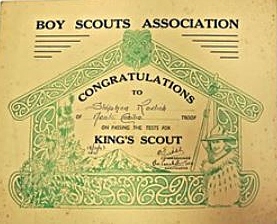 King's Scout Certificate (example)
King's Scout Certificate (example)The final certificate was sent to England to be personally signed by King George VI (his grandfather, Edward VII had established the rank in 1909). However, King George died 6 February 1952 while the document was still on route to the UK. It was eventually signed after Princess Elizabeth had been coronated as Queen Elizabeth II on 2 June 1953. After that, the highest rank was changed to Queen Scout. Now, this level can only be attempted from age 18 and must be completed by age 25.
Nowadays, South Africa has its own highest rank which is the Springbok Award a scout must achieve before his 18th birthday.
Before Gerry Stavros discovered Sedgefield
After Gerry Stavros completed his schooling he did a required 3 year pharmaceutical apprenticeship, before he could attend college and obtain the obligatory qualification to become a pharmacist.
However his scouting years had nurtured his self belief, fostering an independent streak and adventurous spirit so before settling into the harness of a regular job, he said good-bye to his family in Kimberley where they were known both as pharmacists and professional bakers, and went walkabout through Central Africa in 1960.
Gerry Stavros Backpacks through Central Africa
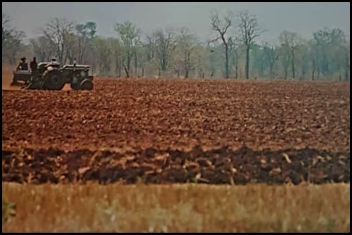 Rhodesian Tobacco Farm - their leaf was considered the best in the world
Rhodesian Tobacco Farm - their leaf was considered the best in the worldStarting
in Zimbabwe, Gerry worked as a supervisor on a tobacco farm for 3 months,
before continuing his travels through Zambia, Malawi, Uganda and Kenya ending
up in Tanzania. On the way he spent time engaging with local people and
learning about their customs. He was also prepared to take on almost any kind
of work to earn money that enabled him to go on travelling.
In Ndola in
Northern Rhodesia, he got a motor mechanic’s job. He worked hard but after a
couple of days the boss called him in and said, “You don’t know anything about
fixing cars do you?” “No.” admitted Gerry. “So why did you take the job then?” Gerry's response was, “Because I needed the money.” The man laughed,
“Well, you can’t work here then,” he said, “but come to my house tonight, I may
be able to help you”. He paid Gerry what he was owed and that evening, gave him
a good dinner and a night’s lodging. The next morning Gerry Stavros was dropped
on the road heading in the direction of Uganda to continue his travels.
 Entrance to the Serengeti
Entrance to the SerengetiWhen he reached Entebbe on the northern shores of Lake Victoria, directions he'd been given led him to the Ndola's Garage owner’s friend, who gave him a job in his restaurant. By working there, Gerry was able to buy some time to explore the area and to continue on his travels.
From Entebbe he hiked via Kenya to Arusha in Tanzania where he found himself a job as a game guard patrolling the Serengeti. However, when his boss realised he came from South Africa (it was in the apartheid era and the government was a strong antagonist of the racist regime) he was told he couldn’t work in the country and had to leave or be deported.
Gerry Stavros – The Restauranteur
Once back in South Africa, Gerry Stavros decided to enroll at a Johannesburg college to qualify as a master baker/confectioner before returning home to Kimberley. However, the independent streak declared itself, when instead of joining the family bakery, he opened the Chez Bompani, Kimberley’s first a la carte restaurant.
The prices listed on his vast menu in the early 1960s included,
Crayfish Thermidor R1.45 Prawns
Peri Peri R1.50
Roast Duckling Bigarade R1.35 Fillet Steak R0.95
Crepes Suzette R1.25
Gerry introduced Friday night dinner/dance evenings. He used to lay down a fold-up dance floor and rearranged the tables allowing diners to have fun letting their hair down. They danced to live artists he engaged from Johannesburg for the evening supported by a dynamic local live band of 4.
The popular restaurant thrived, but never having a problem deciding to do something different, Gerry decided to sell the restaurant and apply to join the Natal Parks Board because he had a hankering to be a game ranger.
Gerry Stavros - the Game Ranger.
Gerry was shocked to discover there was a long waiting list but unfazed, he did a number of odd jobs until he was accepted in 1969. His boss at the time was Ian Player. Gerry started off at Umfolozi in Zululand and decided the time had come to do a motor mechanic’s course. He quickly realised knowing how to fix a vehicle in the wilderness, when out alone, could save one’s life. From there, he was transferred to Lotheni in the Drakensburg to work at their Eland Research station.
Gerry loved the outdoor life and was always a people person, so when he was transferred to St Lucia, he had a thoroughly good time giving visitors to Charter’s Creek informative boat tours of the phenomenal wilderness wetland area.
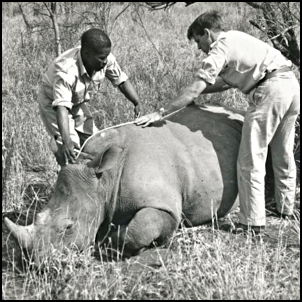 Operation Rhino
Operation RhinoDr Ian Player, 1927-2014, was to become a well-known African environmental educator, internationally acclaimed conservationist and activist, primarily acknowledged for his pioneering role in saving the White Rhino from extinction through his “Operation Rhino” Project begun in 1952.
He was also a successful sportsman, his passion being canoeing. After initiating the Pietermaritzburg to Durban Canoe Marathon (Dusi) as a young man, Ian went on to win the race three times. His exploits are well documented in his book, "Men, Rivers and Canoes".
Gerry Stavros does a short stint as a Pharmacist
Unfortunately for the young Gerry Stavros, after nearly 2 years of thriving in his new career choice, he received an SOS from his brother. His brother’s little daughter had to undergo heart surgery (by the “as yet” unknown Dr. Christiaan Barnard). He needed Gerry to run his pharmaceutical laboratory for him while he and his wife, cared for their child.
Ten months later, in 1972 when the family crisis was over, Gerry re-applied to join the Parks Board but there were no vacancies so he returned to Kimberley opting to open a curio/muti shop.
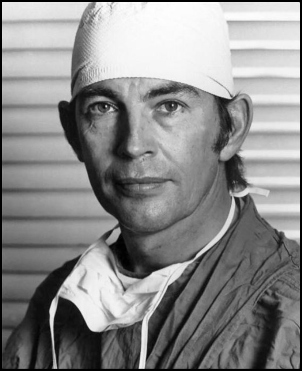 Dr Chris Barnard
Dr Chris BarnardChristiaan Neethling Barnard. Was born November 8, 1922. In 1945 he graduated from University of Cape Town Medical School. The first successful kidney transplant was done in the United States in 1953. The first one done in South Africa was in Johannesburg in 1966. Dr. Barnard performed the second kidney transplant in South Africa in October 1967. He performed the world’s first human-to-human heart transplant operation on 53 year-old Louis Washkansky in the early morning hours of December 3, 1967. Louis survived for 18 days after the operation. Dr Barnard would perform many more successful ones in the years ahead.
Why Gerry Stavros moved to Sedgefield
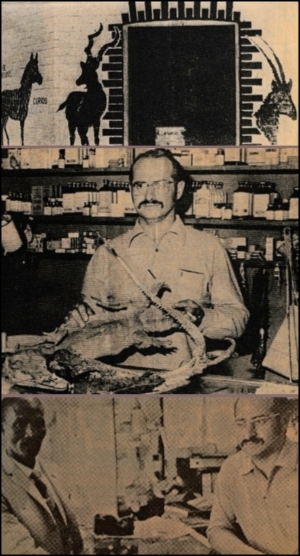 Gerry in his Muti shop
Gerry in his Muti shopGerry Stavros - the Muti Man and Baker
Gerry hadn’t run the curio/muti shop for long when the shop burned down under strange circumstances. It seemed a bit ominous to him when he discovered a little carved mouse given to him by a black witch doctor was missing not long after the shop had been rebuilt.
Enterprising as always, he decided to move on from his Muti Man role so together with his wife, Kathy (whom he had married in 1974) he bought the Stavros family bakery, The Better ‘Ole, named from the First World War maxim, “If you can find a better ‘ole, jump in”.
The bakery prospered and during their hard-working years, a daughter, Elly Maria was born in 1976 and a son, Gregory Efthimios in 1978.
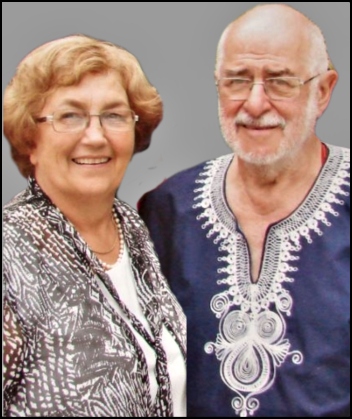 Kathy and Gerry Stavros
Kathy and Gerry StavrosIt was, however, a very demanding business for a couple with two young children so at the end of 1982 they decided to sell it without any certainty of what they would do afterwards. Tiger Oats Milling Company bought it. Not long after that Gerry’s godfather in Wilderness (where he owned and ran a popular Steakhouse) told him about a little inn with a superette attached coming up for sale in the small coastal village of Sedgefield. He initially was quite keen to go into partnership with them but after selling the steakhouse, and teaching the new owners all his trade secrets, he decided to return to Kimberley instead.
Meanwhile, Gerry and his family came down with some friends one weekend staying at Montmere in order to view the business premises that was up for sale and to discover for themselves the previously unheard of hamlet of Sedgefield. Kathy was mostly concerned about there being a decent school for the children. They were already on the way back to Kimberley when they decided they should seize the opportunity to buy what appeared to be a promising business on the Garden Route.
Gerry Stavros, Businessman, moves to Sedgefield
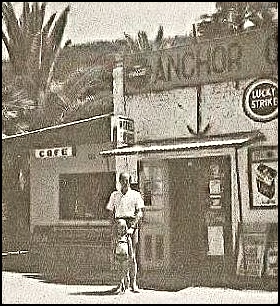 Anchor Cafe
Anchor CafeBack in existence since the 1940s, the business was first owned and run by Walter Muller who called it, Mullers Motel. It was still owned by him into the 1960s and had a small tea garden attached to it.
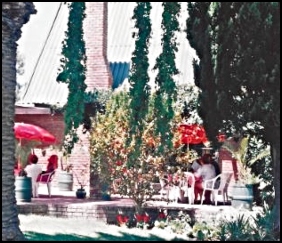 The Tea Garden
The Tea GardenAfter that, the business changed hands a number of times. Another owner, Sam Kerr who took it over in1963/64 had to later change the name because new liquor laws were introduced that meant they could not call it a motel without a liquor license so they changed the name to the Anchor Tea Room because of a large anchor sitting on the lawn near the entrance.
Koos Schoeman was the owner by the time the Stavros couple bought the property and by then, it was known as Stop ‘n Stay. In July 1983, they moved lock, stock and barrel to Sedgefield.
 Stop n Stay before Gerry changed the overnight bedrooms to shops and upgraded the complex to Forest Lodge
Stop n Stay before Gerry changed the overnight bedrooms to shops and upgraded the complex to Forest LodgeIn Sedgefield, Gerry Stavros quickly discovered the Stop ‘n Stay kitchen facilities were woefully inadequate compared to what he was used to. The kitchen had only one electric plug with a second in the dining-room. The 4 plate gas hob was downright dangerous and the fridge, totally impractical.
 Stop n Stay 1983
Stop n Stay 1983Never a man to baulk at getting things done, Gerry called in local technicians, Paul and Peter Jablonski to rewire the whole place including the sleeping quarters where the main switchboard was found hidden away on top of a cupboard in one of the rooms. There was a small dining-room where overnighters could have a cooked breakfast prepared by ‘mine hosts’.
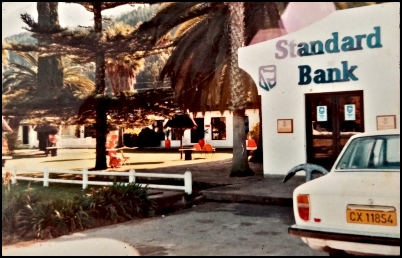 Standard Bank
Standard BankOne part of the complex came with a tenant, Standard Bank paying R100 per month for their premises. At the time, the bank was only open twice a week from 9:00am -11:30am on Mondays and Thursdays.
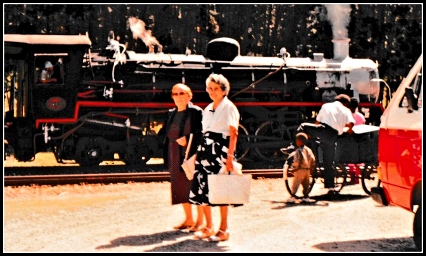 Kathy's Mother and Aunt at Sedgefield Station before the platform was built
Kathy's Mother and Aunt at Sedgefield Station before the platform was builtTwo cottages came with the property, one the Stavros family lived in and the other, Kathy’s mother stayed in when she visited for 6 months every year. She loved watching the train pass through Sedgefield from her bedroom window at 6am and 10am every morning. The other 6 months she stayed with her other daughter in PE.
Soon, Gerry’s young single nephew, Dimitri Divaris came to share the cottage with her. He was just starting his working life and had been staying in very basic digs on the way to Cloud 9. Gerry and Kathy quickly settled in to become an integral part of the Sedgefield community.
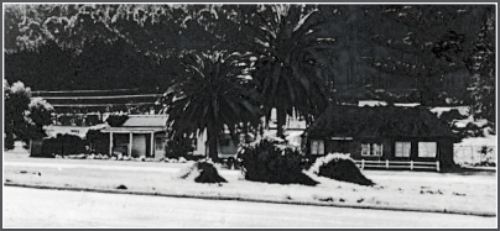 The Two Cottages (still there on the main road - one has become a small backpackers and the other is a Tea Garden)
The Two Cottages (still there on the main road - one has become a small backpackers and the other is a Tea Garden)With new stainless steel tables and double sinks, double-door fridges, industrial microwave oven and Garland Gas cooker in the kitchen and a bain marie in the dining-room to keep the buffet food hot, Gerry and Kathy were encouraged by numerous local requests to present a Christmas lunch for residents and holidaymakers at the end of the year.
They organised 2 sittings at 12:30 and 2:30. It was a complicated 6 course menu of hot and cold food and a horrible fiasco recalls Kathy as they totally overestimated their capabilities, in their updated but somewhat, restricted environment. She remembers her poor mother was still waiting for her lunch at 6pm that evening! That first season they had 28 power outages in 31 days and even Gerry’s new large Lister diesel generator couldn’t supply all the power needed during that time.
The couple then proceeded to turn the superette into a mini-market and refurbished the inn naming it, Forest Lodge. Gerry moved the milk, bread and newspapers from the front of the store to the back. It meant people had to walk between aisles of popular items to get to the necessities.
He added Cadbury’s chocolates to the sweets area ordering the chocolates directly from the Garden Route Rep instead of using a wholesaler. In no time Gerry was told by the rep that his shop was selling more chocolate than George and Knysna. He was doing well so Gerry installed a butchery section and leased it to a butcher, Raymond De Bruin whose rent was a percentage of his sales.
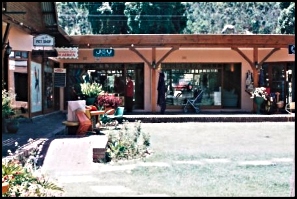 The quadrangle area where lawn replaced the cracked and dangerous swimming-pool once it was filled in.
The quadrangle area where lawn replaced the cracked and dangerous swimming-pool once it was filled in.When Gerry Stavros first bought the property the lawn (that now exists in the quadrangle area) between the rooms and the shop was an empty swimming-pool that had cracked losing all its water. Deciding it was more of a danger in its position than an asset, the decision was made to fill it in and replace the area with lawn.
In the tiny village with tortoises ambling along dirt roads and guinea-fowl flocks roaming freely all over the place, the lounge at Forest Lodge was the only indoor public meeting place readily available. Kathy and Gerry provided a venue welcoming all groups and offering them tea and biscuits for free. The inaugural meeting of the Sedgefield Lions Club was held there and Gerry Stavros became its’ first paid–up member.
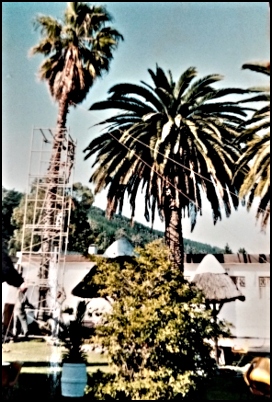 Restructuring the Garden
Restructuring the GardenKathy ran an information centre getting names and numbers of places that could put up people when her rooms were full. She also created her own laundromat so she could fully employ three maids, who weren’t kept busy otherwise, and to supply laundry services for people who provided over-night stops for travelers when necessary.
 One of Sandy's Childrens' Parties
One of Sandy's Childrens' PartiesGerry couldn’t resist running a little a la carte restaurant in the dining-room of the inn – it thrived. He introduced live entertainment by singers from nearby towns on Thursday nights. Martin Herd was the barman. He was brother of Paul Herd who along with his mother ran Café Vienna for many years. Mike Young’s daughter was a barmaid. Two of Phyllis and Cecil Salt’s three girls, Sandy and Diane worked as cashiers in the restaurant including weekends and school holidays. Sandy successfully organized numerous children’s birthday parties on the lawns of the lodge.
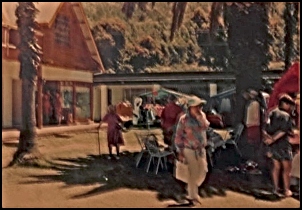 Village Arts and Crafts Market
Village Arts and Crafts MarketAs time went by, Kathy initiated a Village Arts and Crafts Market that took place on the lawn from 9am to 2pm on the last Saturday of the month. It was the first of its kind on the Garden Route.
After Gerry had built up the turnover, he sold the mini-market business (not the property). It changed hands several times after that. At one stage the Nels ran it. At another time an Italian, Guiseppe Chissari who sold it to Hennie and Gloria Louw when he moved to Australia in 1993.
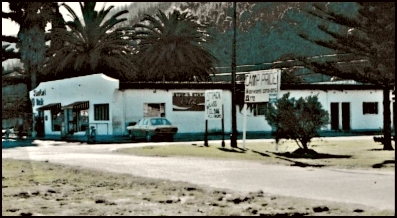 The Mini Market side of the complex
The Mini Market side of the complexThey sold it to Dries du Toit and his brother-in-law, Calvyn Ferreira when Dries made them a good offer although it was not for sale and the Louws had not planned on selling. Dries and Calvyn did not make a go of it and closed it after only a few months. The shop stood empty for quite a long time after that. Gerry renovated the shop before it was occupied again.
Before Gerry moved to the farm he had purchased on Wilderness Heights in 1989, he built a large bar-cum-restaurant onto complex, Dimitri his nephew, did the necessary alterations for them.
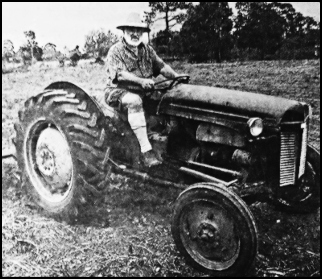 Gerry in his element on his tractor
Gerry in his element on his tractorThe couple moved from Sedgefield into the comfortable rambling farmhouse primarily because they wanted their children to attend high school in George and so they would be zoned there. The Stavros children, Elly and Gregory remember they assisted with the running of the pub for a time while they were at high school until Gerry decided to lease it out.
For a number of years, as his children finished high school, Gerry ran a delicatessen, The Continental Touch from one of his newly built shops overlooking the central palm-fringed garden. Mornings would find him in the farm garden picking herbs, vegetables and fruit to cook, bake, pickle, smoke and preserve in his large country kitchen.
 Cathy Barnes and Gerry outside The Continental Touch
Cathy Barnes and Gerry outside The Continental TouchDaily, young Cathy Barnes used to open his shop and run it for him until he arrived in the afternoon. She was very reliable and conscientious, working to earn money to go to university. Gerry decided to give her a 30% share in the delicatessen. She worked for him for 3 years and then she asked him if he would pay her out for her share so she could pursue her tertiary education. He readily agreed.
His deli counter was crammed with Greek and other continental specialties like pickled or smoked baby octopus, calamari or mussels, salted or smoked sardines, citrus or brinjal atjars, dolmades (bite-sized little rolls of herbie rice stuffed in leaves and boiled until tender), taramosalata (creamy dip made with salted mullet or cod fish roe), skordalia (garlic and potato dip) and real creamy Greek yoghurt. He also had a bewildering range of olives – stuffed, pickled, dried, green, black, Calamata, and gourmet cheeses, Greek wine, and Kathy’s divine spinach pies and honey-soaked baklava when he could persuade her to make it.
The shelves held his famous chili sauce, pickles, sauerkraut, succulent brinjal slices in garlic oil alongside regiments of imported and other local fancy foods. Gerry’s motto was “You want it, I’ve got it”! He also kept all the spices, noodles, different kinds of rice, sauces and pastas local cooks needed for their Indian, Italian, Chinese, Thai and other exotic dishes.
A widow, Pauline Roberts replaced Cathy and manned his deli in the mornings until he arrived at the shop. Gerry was able to continue his routine of coming into town in the afternoons restocking and running his fine foods store.
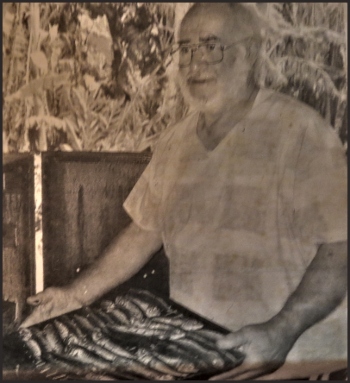 Gerry with his special Smoked Sardines
Gerry with his special Smoked SardinesEvery so often, when the smell of freshly baked bread followed Gerry into the deli, so did eager customers enter close behind him. His whole-wheat and barley, tomato and basil, baby marrow, and Greek peasant loaves were delicious local favourites. Only someone with an iron resistance could walk out empty handed.
Those that failed to heed his friendly warning, “beware of Greeks bearing gifts” and sampled the little taster dishes of smoked seafood, pickles, olives and pate he generously offered, frequently ended up buying too much.
In 1994, Gerry converted the bar/restaurant into a Forrester’s English Pub. Over time, the pub has been run by different people and the shops have had many different businesses in them, some successful and some that weren’t.
 Forest Lodge Complex Today (2020) South Side facing the N2
Forest Lodge Complex Today (2020) South Side facing the N2Gerry Stavros returns to retire in Sedgefield
In 2006 Gerry sold his deli and a short time after that Pauline went to work for Joe and Louise at the Steam Whistle Stop on Sedgefield Station. With their children out of the house and living their own lives, Gerry Stavros and wife, Kathy could slow down to enjoy their retirement.
In 2016 at the good old age of 82 Gerry Stavros sold their farm and the couple returned to live in a comfortably smaller house in the heart of Sedgefield to see out their days in the little Garden Route town where he and Kathy and their children created so many happy memories.
In 2023 the couple were living at the Berg 'n Sea retirement home when Gerry passed away on 30 December. A wonderful character with a massive heart he will be remembered for the massive contribution he made to the Sedgefield village community. His children are now managing Forest Lodge under a new and attractive name, Amblewood.
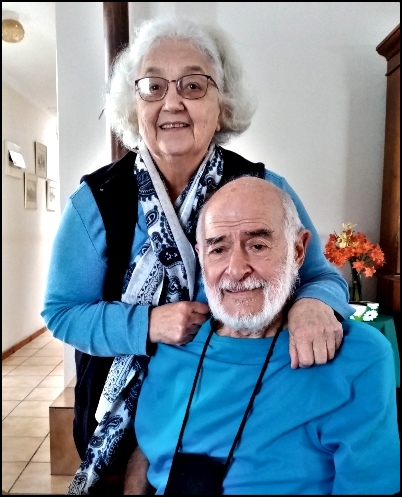 Kathy and Gerry retire back in Sedgefield
Kathy and Gerry retire back in SedgefieldIn 2020, their daughter, Elly moved to Knynsa with her husband and their children. Gerry's son, Gregory with his young family, plans to move there soon so it is lovely that they will have their closest family nearby as they enter their twilight years. Gerry was loved and respected by the community he served in the 1980s and 90s. His title of Sedgefield's godfather, was well deserved.
During Gerry’s early life in Sedgefield, with great foresight, he persuaded local resident, Reedon Rodway, a fine water-colourist, to paint several of Sedgefield’s notable landmark buildings, many of which have since disappeared. Gerry has them still and he gave me permission to photograph the paintings when they were hanging in his farmhouse passage. I have since incorporated many of them into several pages on my website.
If Sedgefield had any kind of suitable place, a church or public building where they could be safely displayed and appreciated for capturing by-gone reminders of Sedgefield’s history, Gerry told me, he would donate them to Sedgefield. It would be his lasting legacy of some of Sedgefield's history.
References
Many, many thanks to Gerry and Kathy for their time, input and photographs.
Leisure Magazine PE dated 21Dec. 2002 Article written by Jenny Nattrass
https://springsadvertiser.co.za/181454/happy-birthday-christiaan-barnard/
(Photo: Ian Player) https://garyplayer.com/remembering-dr-ian-player-on-world-rhino-day/
Excerpt from https://www.wildernessfoundation.co.za/about/dr-ian-player

